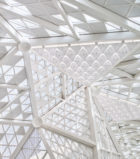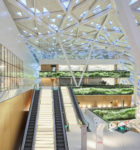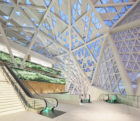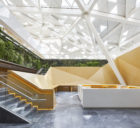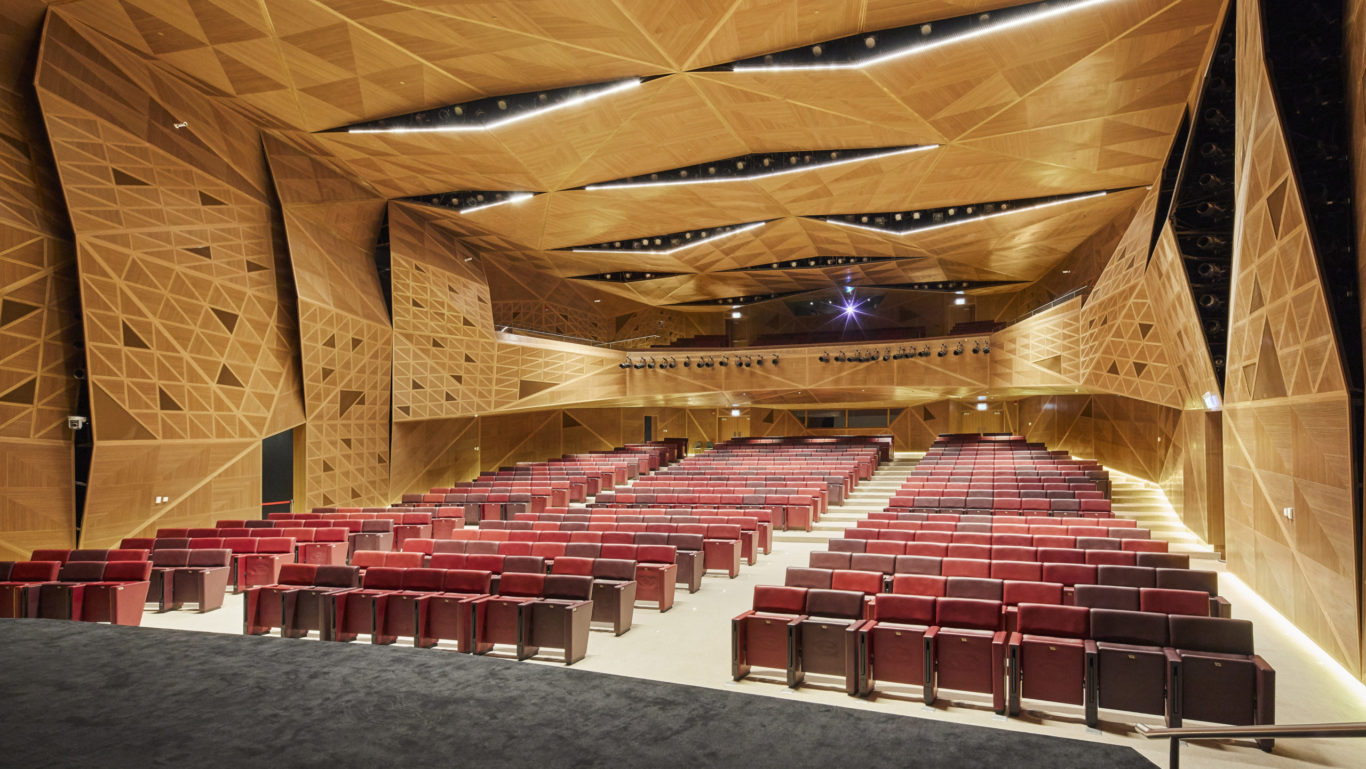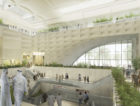A venue designed for the digital age
As part of the new King Abdullah Financial District (KAFD) in Riyadh, the Conference Center makes a distinct impression with its faceted geometry, evoking the landforms of the desert terrain. The master plan for the larger civic, financial, commercial, and residential development features a sunken outdoor pedestrian path as well as a monorail system that connects the district.
The Conference Center contains nearly 1,300,000 square feet of conference facilities, along with restaurants, an elevated public concourse, and a monorail station. The state-of-the-art building sets a new standard for flexible conferencing, providing a multipurpose event hall with operable walls, a 600-seat auditorium with full lecture and cinema support, and a “digital forum” approach that allows all venues to be internally and externally networked.
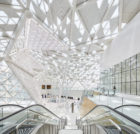
The conference rooms are designed as immersive four-wall video environments, with walls that contain retractable projection screens allowing users to conduct virtual meetings. The conference rooms are clad in electrochromic glass that permits users to change from clear to opaque glass based on their desired levels of light and privacy. A “media cloud” in the ceiling of each conference room has the ability to communicate with mobile devices, permitting wireless sharing and projection of user content in a meeting setting. Dynamic interactive signage enables conference attendees to brand individual rooms and conference venues.

